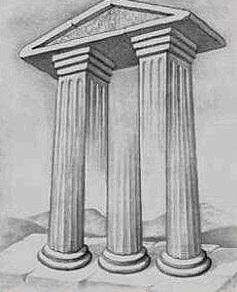 Have you ever been to Saint John Lateran in Rome? Have you ever seen its marvellous floor? It is what we call an optical illusion. These geometrical stairs-like images that pretend to be 3-dimensional are actually in 2-D. But why do our eyes cheat us? What happens?
Have you ever been to Saint John Lateran in Rome? Have you ever seen its marvellous floor? It is what we call an optical illusion. These geometrical stairs-like images that pretend to be 3-dimensional are actually in 2-D. But why do our eyes cheat us? What happens?
An optical illusion is a deceptive or misleading image, because our brain tries to process the information given by our eye by perceiving something that is not present in the real world or without perceiving it in the proper way.
Illusions can be classified into three categories:
– Optical illusions, that is caused only by an optical phenomena, not dependent on human physiology, like a mirage;
– Perceptive illusions, whose origin lies in the physiology of our eyes;
– Cognitive illusions, generated by the brain itself.
 Every category may comprehend many different types of subcategories: geometrical illusions, colour and contrast illusions, perspective illusions, and many others. To give an idea of how many illusions it is possible to detect, it could be interesting to look up into this appealing website, where you can discover lots of different kinds of illusions and games.
Every category may comprehend many different types of subcategories: geometrical illusions, colour and contrast illusions, perspective illusions, and many others. To give an idea of how many illusions it is possible to detect, it could be interesting to look up into this appealing website, where you can discover lots of different kinds of illusions and games.
The optical illusions have always been very fascinating and thought-provoking. They have been used also in architecture: ancient Greeks, for example, used to build their temples with optical illusions to obtain an impressive effect on the visitors.
Also many artists such as M.C. Escher, Salvador Dalí, Giuseppe Arcimboldo, Marcel Duchamp have worked to a plan of optical illusions. Leonardo da Vinci studied them as you can see in the History of Science Museum in Florence, not far from our school. Maybe it could be fun to discover the secrets contained in this famous and mysterious masterpiece by Leonardo… how many faces can you see there? Check your answer here!
Optical illusions (1)Scrivi un commento |







Commenti recenti